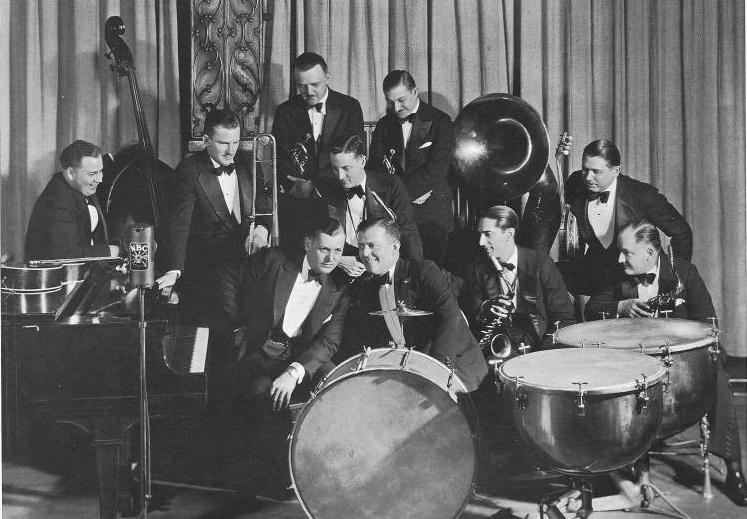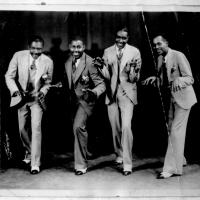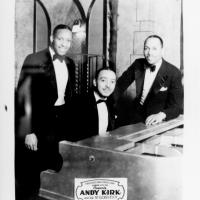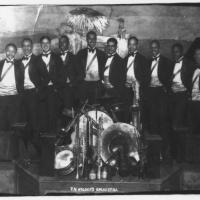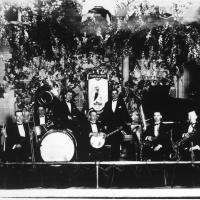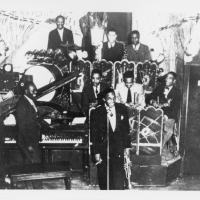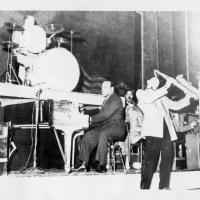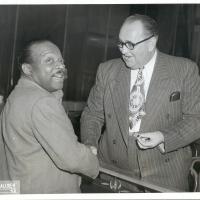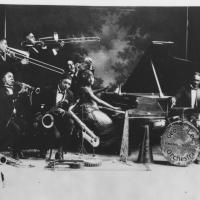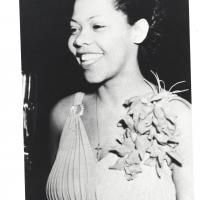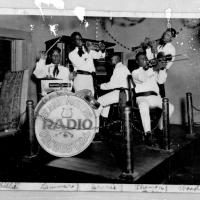Kansas City Jazz
In the "wide open" environment of Kansas City in the 1920s and 30s, nightlife thrived, musicians established themselves, and the creative space allowed a unique style of jazz music to emerge. A white band, the Coon-Sanders Nighthawks Orchestra, became the first national radio sensation on Kansas City’s WDAF (one of just four U.S. radio stations in existence in 1922). But it was African American musicians, many associated with Bennie Moten’s Kansas City Orchestra and inspired by blues and ragtime traditions, that developed the Kansas City style—featuring complex rhythms, carefully restrained drum beats, and riffs in the late 1920s and 1930s. Centered on the intersection of 18th and Vine St., the jazz district nurtured such musicians as Count Basie, Charlie Parker, Andy Kirk, George E. Lee, Julia Lee, Jay McShann, Joe Turner, Mary Lou Williams, and Lester Young. The collapse of the Pendergast machine after 1939, however, ended the legally and socially permissive environment that had allowed Kansas City’s nightlife to thrive in the first place.
Featured Article
As Bennie Moten, George E. Lee, and other African American bandleaders based at 18th and Vine pioneered a new style of jazz, a number of white bands in downtown Kansas City were performing a style of hot jazz modeled after nationally popular white bands. Ironically, while Kansas City would gain renown for its great African American bands that barnstormed across country, it was a white dance band, the Coon-Sanders Nighthawk Orchestra, which first established Kansas City’s national reputation as a jazz center.
